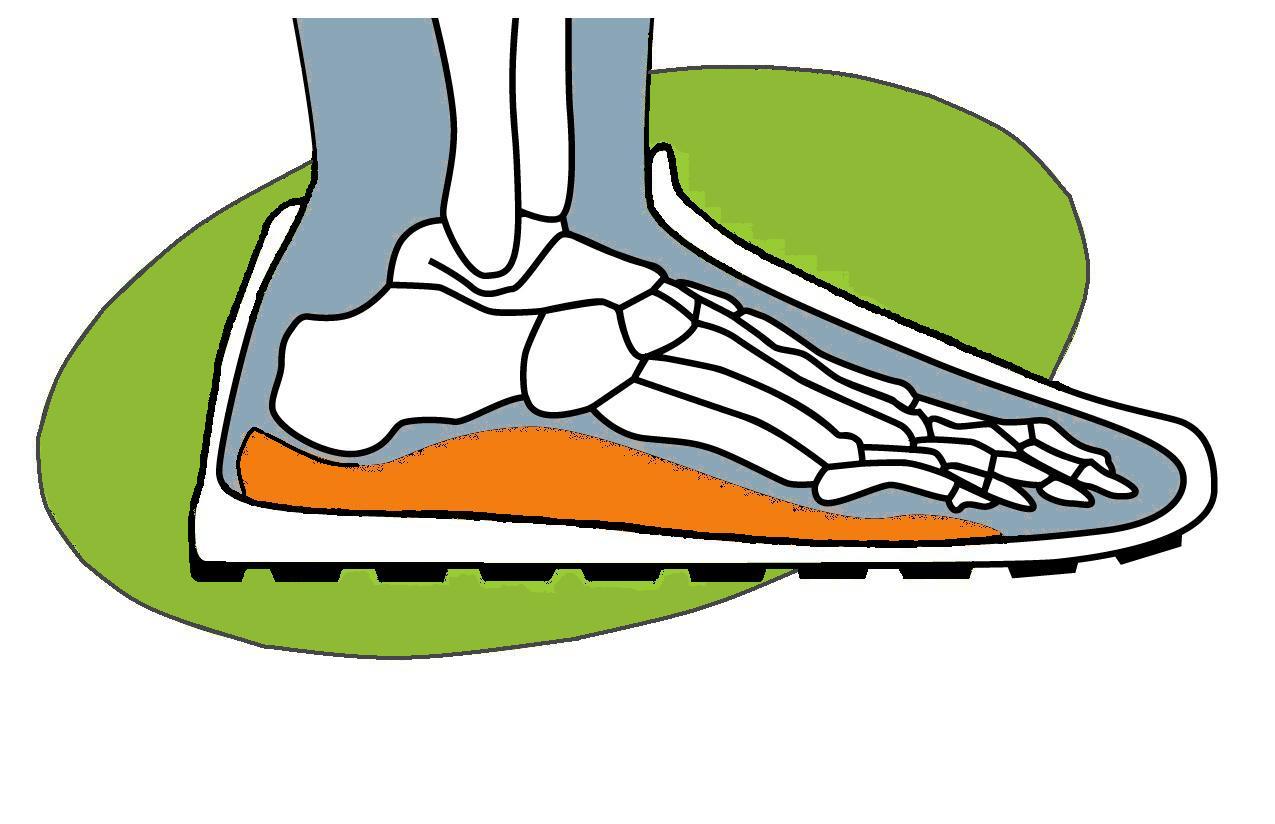Construction & Cost
Materials
Dr. Coffin makes his orthotics from a variety of non-compressible,
flexible materials which he has chosen for the patient's specific foot
condition. He is constantly experimenting with new materials. All of his
orthotics are made in his own laboratory and he personally completes
several steps including producing an accurate cast and positive replica
of the foot in a correct neutral position, as well as finishing the
process to create a device which will function well for each patient and
their particular needs. Dr. Coffin has experimented with a variety of
chemical polymers and has developed materials of the appropriate density
and flexibility. He also determines which covering material and shock
absorbing materials will perform best for each patient based on their
foot type and level of activity.
For those who must wear a dressier shoe the majority of the time, it is
an option to order leather orthotics which are less bulky and take up
less room in the shoe.
Dr. Coffin does not utilize hard, plastic orthotics.
Construction
Dr. Coffin has found that the orthotics that are most successful are
those made to the length of the sulcus (just beyond the ball of the
foot). It is possible to create a full length orthotic; however, many
have reported that this tends to scrunch the toes in the toebox area.
The three-quarter length allows the big toe to push off more effectively
as well.
Use with supportive shoes
Orthotics can be worn in different types of footgear. They work best
in supportive, tie shoes, but they will fit into other selected shoes as
well. Depending on the width and depth of the shoe and heel counter,
orthotics can be made to fit into some dressier type shoes. Some people
order a second pair (at a reduced price) made especially for those
shoes.
Cost
The charge for custom orthotics is $350 which includes taking
impressions, building the orthotics and making adjustments for the first
six months. We request a deposit of $100 at the time the impressions
are taken. We will submit the claim to your insurance company; however,
many insurance companies do not cover orthotics. There will be an
additional charge for the office visit which is usually covered by
insurance.
We accept cash, checks or credit cards and will make arrangements for
monthly payments.
Longevity
Most orthotics will last 2-3 years or as many as 5 under normal
conditions. Some people such as athletes may need to replace them
sooner. Others have worn the same pair of orthotics for ten years or
more.
Guarantees
People frequently ask if the orthotics are "guaranteed." As we
tell patients, Dr. Coffin will do his best to make you comfortable in
your orthotics and address the problems that brought you in to see him.
Many times orthotics are just the ticket and relieve the patient of
their pain. Other times, the pain is decreased and makes everyday living
more tolerable. Dr. Coffin can't guarantee that everyone will become
pain-free. Often a person's inherited characteristics or previous injury
predisposes them to painful conditions such as arthritis or neuropathy.
Orthotics may help alleviate some pain but it may be necessary for the
patient to continue other modalities such as physical therapy and
medication.
Totally Custom Made
Custom made orthotics are just that - made for each individual foot -
never pulled off a shelf - but started from scratch, molded and shaped
to the impression taken of your feet. Taking the impressions correctly
is a very important step in the process - one that Dr. Coffin does
himself for his own patients. He does trust selected therapists who have
studied his techniques for taking semi-weight bearing impressions. It is
important to understand the final goal of the orthotic and take the
impressions with the feet, knees and hips correctly aligned.
We are proud of our workmanship - manufacture of our orthotics involves
many steps (21 to be exact) and much of the work is done by hand. Dr.
Coffin is very involved in the manufacture and personally completes
several steps including creating an accurate cast, selecting materials,
creating the specific qualities needed and the finishing of each pair.
 Dr. Paul D. Coffin
Dr. Paul D. Coffin